INTENTION: DIY Lithium Titanate Powerwall
To build a solar storage battery that was 100% safe with enough charge-cycles to last my lifetime (at least). Battery chemistry of choice: Lithium Titanate or more commonly known as LTO cells.
Create an uninterruptible power circuit with the GoodWe 5048 to preserve foods and essential services for our household of 5 during any short-term power outage event.
OUTCOME: An Education In Battery Management
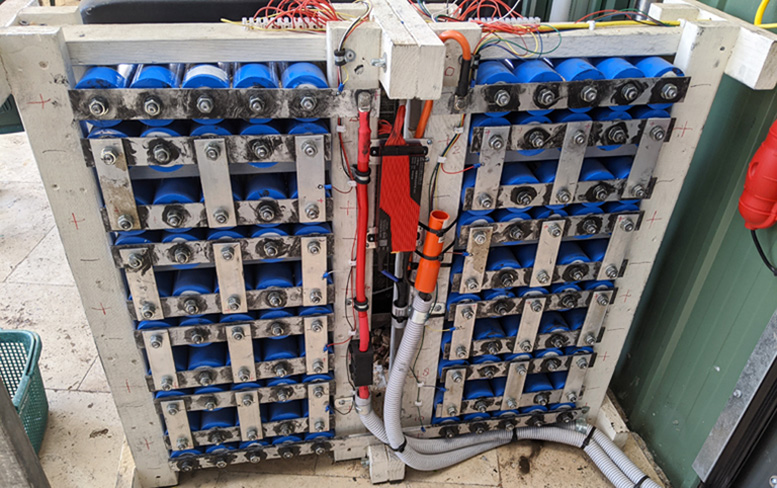
5P20S Lithium Titanate Battery Wall using 66160 cells (total = 100 batteries).
This was my first planned and major long-term project. Initially I was on the 18650 battery wall train, but definitely jumped aboard late. Used batteries were to hard to find and the first battery wall accessories were expensive (though cheaper now).
Also it required many batteries and the most common form of connecting was spot welding. I built a DIY spot welder I saw on YouTube – it didn’t work great and was hard to get consistent bonding to the cells. I either blew a hole through the top or the nickle strip just pulled away with ease.
There was also the situation with fake batteries and other dangers with early Lithium Ion batteries getting thermal run-away and busting into flames. Their charge cycles were also not great, typically around 1,500 cycles or 5 years (approximately).
LiFePo4 cells were in their infancy price-wise so the cost at that time was almost as high as the LTO cells, but at least offered many more positives! (pun intended).
After much research, it was my personal decision to go with the LTO cells – mainly due to only ever having to make one purchase for my lifetime – unlike other cells that are only good for around 5-to-10 years (obviously depending on use and conditions).
Further research showed the 66160 format cells to be the best amp-per-dollar though they were a difficult shape to make a battery pack out of. Pouch cells were also affordable but carried some negatives – mainly easy of construction and known issues of swelling.
When these 66160 cells were purchased from AliExpress, there was not much information going around about them, unlike now where there are blogs and videos galore. Thus some of my personal learning curve has been expensive – often requiring upgrades and replacements along the way.
Initially I ordered 100 x 66160 Lithium Titanate 40Amp cells through the seller “Shenzhen Foxell Technologies Co., Ltd” at AliExpress. The idea was to run 5P20S 5 X 40 x 2.3 = 460 watts for parallel bank. Now multiply that 460w by 20 series = 9,200 watt UPS back up system.
What I ended up with for the GoodWe 5048 was 5P20S 5 X 26 x 2.3 = 299 watts for parallel bank. Now multiply that 460w by 20 series = 5,980 watt UPS back up system. Not only have I lost half my intended (and paid for) amount of power, but I later learned these batteries were C grade used cells!
When I purchased the battery cells, there was no accurate way of testing them for true capacity so a visual inspection, measuring voltage, and the sellers word was all I had. As we NOW know, China can be less than honest in their claims about battery capacities – including 18650 batteries rated at 9900mAh, impossible!
Being it was well outside their 15 day/60 day guarantees, both the seller, “Shenzhen Foxell Technologies Co., Ltd” and AliExpress have been less than helpful, no matter how much proof I supply.
The design of the GoodWe 5048 battery wall was made around considerations such as:
-
the area available,
-
access to the area available,
-
the cost of materials,
-
the size, shape and connectors for the 66160 battery cells,
-
the availability of air flow around individual cells,
Primarily the wood is 70mm x 35mm pressure treated pine, glued with liquid nails and screwed together. Two separate identical racks were made, then connected together. This facilitated easier construction.
Measurements were simply built using the size of the batteries: lay down and stack the batteries, place the next piece of wood and secure. Remove batteries and continue with the next row being careful not to damage or short your cells.
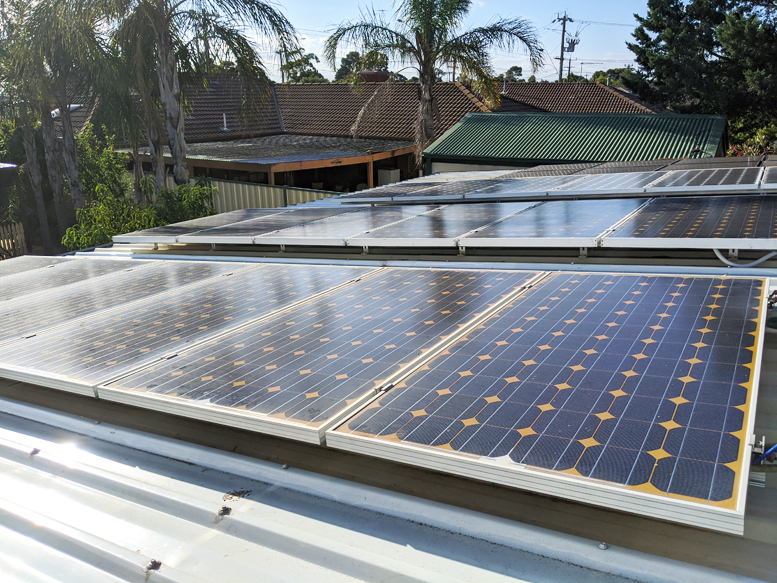
West side solar array connected to one MPPT circuit.
I suggest using true YinLong brand 40 or 45amp cells, any smaller and there isn’t enough energy density and the design then becomes to large. DO NOT USE ANY OTHER BRAND such as GTK as the are all FAKE, low grade cells that will not measure up in capacity or performance.
You can buy through AliBaba and AliExpress but check your cells on arrival with the SKYRC MC3000. You can also purchase DIRECT from the manufacturer YinLong when purchasing larger quantities.
What Do I Run On My GoodWe 5048 UPS Circuit
-
2 X large refrigerators
-
1 X Internet Router
-
1 X Internet Cable Modem
-
Lighting in both toilet/bathrooms
-
Main TV and entertainment systems
-
Work computer and accessories
-
Instant gas hot water system igniter
Calculating the total load, with the FAKE batteries, I get approximately 2 hours at near full load. If I had been sold the correct cells, it would be closer to double that, around 4 hours of supply during a power failure when there is no sun shining/night-time.
Switch-over is seamless, and I never notice any ill effects in the event of a power failure. During the day, the solar not only recharges the battery bank, but also supplies the UPS circuit with energy as needed.
If the solar falls short and the batteries are flat, the inverter automatically draws from the mains power for both the UPS circuit and charges the battery at the same time.
All UPS circuit wiring was performed by a qualified “A” – grade electrician. DO NOT install AC wiring yourself and follow any and all regulations when working with DC wiring. Where possible, all UPS points, wall plates and switches are colored “RED” for safety and easy identification.
Daly BMS Protection
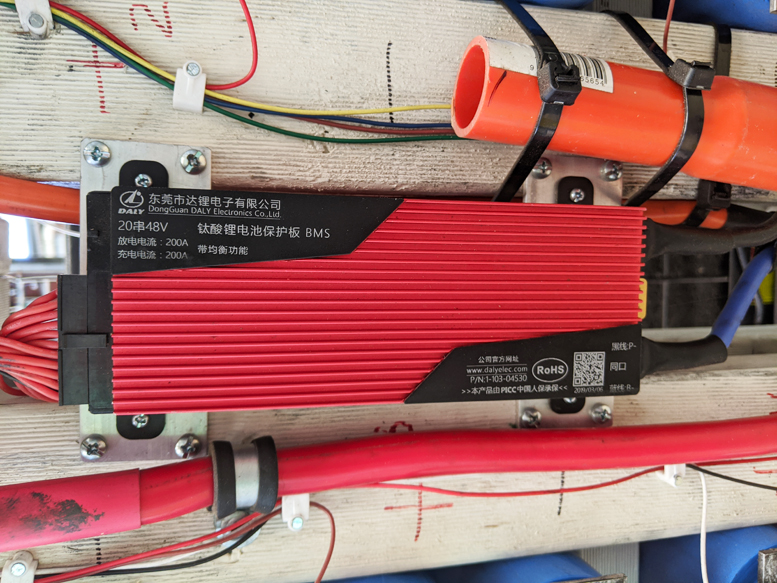
While I find the DALY BMS very ineffective in any form of balancing, it does complete the task of single cell protection to some degree. I strongly recommend protection for LTO chemistry cells from my experience.
A combination of BMS and ACTIVE BALANCING either as separate boards or the newer combined circuit are critical for protecting Lithium Titanate cells – regardless of the minor consumption of these devices.
Case and point: You can easily destroy LTO pouch cells with only minor overcharging, 66160 format batteries seem more resilient though.
Active Balancers
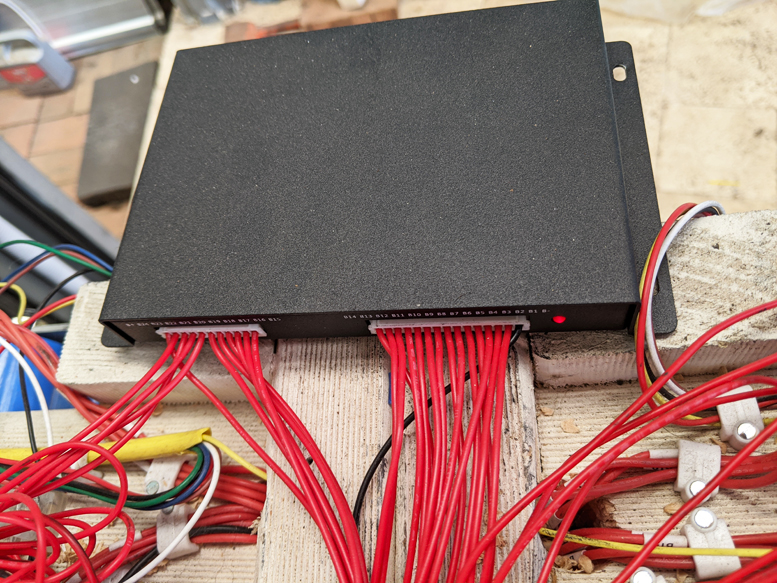
A definite improvement from the standard BMS set-up, these “ACTIVE” BMS circuits continuously work towards keeping all cells closely aligned. With larger units, they come with BlueTooth monitoring.
Also, just recently available on the market are active balancers that incorporate similar features that standard BMS circuits provide – so you no longer need these DALY type boards for protection.
I found that a number of cells would not hold voltage or only held partial voltage. This could be seen on the Bluetooth monitor as a constant problem for the exact same cells. There were approximately half a dozen that turned up in different cell packs often causing the inverter to trip out with a low voltage error message and completely shutting down the UPS circuit when allowing the system to cycle a discharge daily.
Heed my warning, always use an ACTIVE BALANCER with LTO chemistry, they respond well to this sort of care and protection.
Auluminum Bus-bars
I use conductive grease on all joins when using aluminum conductors. This is to avoid oxidization creating high resistance connections.
There are many advantages and disadvantages in using different types of conductors. I chose hardware store grade aluminum flat bar as it was affordable and I could easily over-design it even when taking into account an oxidized connection.
LEARNING MORE ABOUT LTO! – The Technical Stuff
What I Like About Lithium Titanate Batteries
-
They are perfect for solar storage systems of all types (when set-up correctly).
-
They work great with active balancers – even when starting with batteries that are way out of balance.
Lithium Titanate Oxide Cells and Batteries from GWL: Lithium Titanium Oxide Cells
The Key Benefits of Lithium Titanate Batteries (LTO)
The advantages of Lithium Titanate Oxide (lithium titanium oxide) battery technology are significant and the whole LTO technology is a game-changer for the entire battery industry. The LTO is bringing a new dimension of possibilities for the energy storage with a number of economical as well as ecological aspects.
Li2TiO3 chemistry
With applications in many sectors, with a primary focus on high speed charging and energy storage, Lithium Titanate Oxide (lithium titanium oxide) technology is the future of battery-powered technology. Let’s see the key benefits and advantages of the LTO battery technology.
Lithium Titanate Oxide (lithium titanium oxide) Battery Technology
In essence, the LTO is a rechargeable battery based on the, or modified from, the Lithium-Ion (li-ion) battery technology. Li-titanate oxide (LTO) replaces the graphite in the anode of the typical Li-Ion battery and forms the materials into a spinal 3D crystal structure.
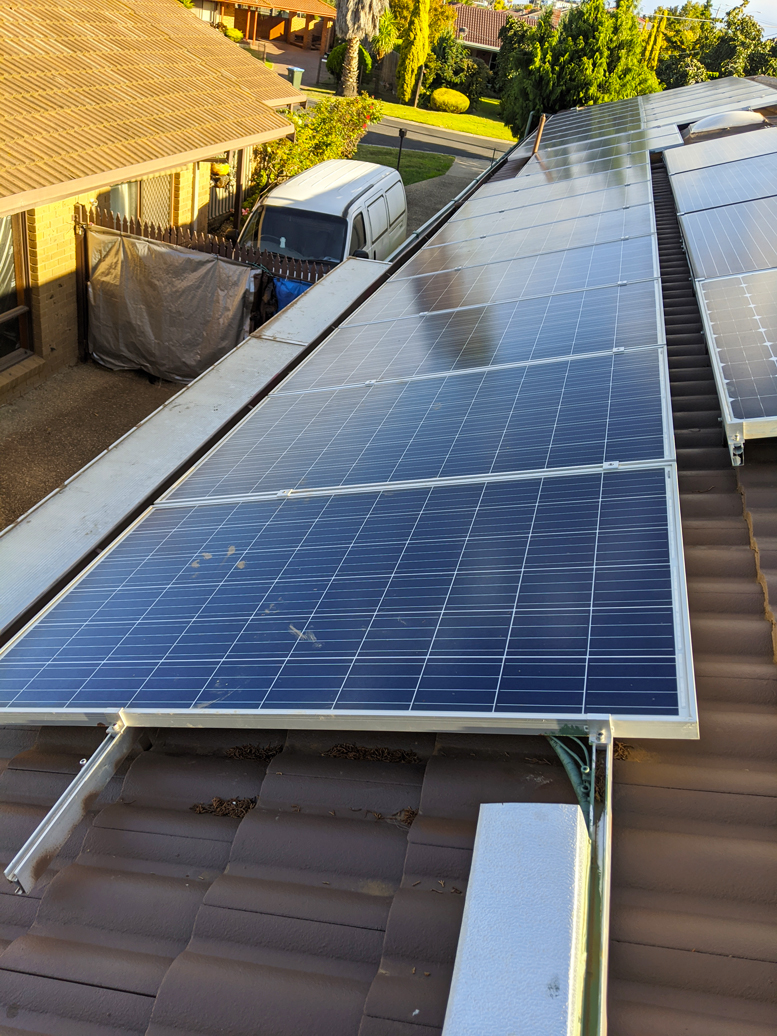
East side solar array (lower panels) – showing afternoon shadowing.
Having a nominal a cell voltage of 2.40V, it releases a high current discharge current that is 10 times the capacity of the other types of lithium batteries. Instead of using carbon particles on its surface as other lithium batteries do, Lithium Titanate utilizes lithium-titanate nanocrystals.
Titanium used for Lithium Titanate Oxide anodes
The effect and benefit of this alteration and inclusion of lithium-titanate nanocrystals is that the surface area of the anode of the Lithium-Titanate battery is about 100 square meters per gram in contrast to the only 3 square meters per gram that Li-Ion batteries hold.
The result of the lithium-titanate nanocrystals with their enlarged surface area is that electrons are able to enter and leave the anode much more rapidly, leading to fast recharging and enhanced lifetimes of the battery.
Lithium Titanate (LTO) Cells – Technical Advantages Of Li4Ti5O12 Chemistry
Lithium-titanate Oxide (LTO) based cell: Advantages of Lithium Titanate Battery Technology
Given the basic scientific advantages of the high-tech nanotechnology involved in producing Lithium Titanate (LTO) batteries, it is of special interest to see just how the new technology influences the product positively for the consumer and for reliability.
Lithium Titanate batteries’ benefits range from long lifetime to enhanced safety, low-temperature performance and large potential for integration with energy storage solutions.
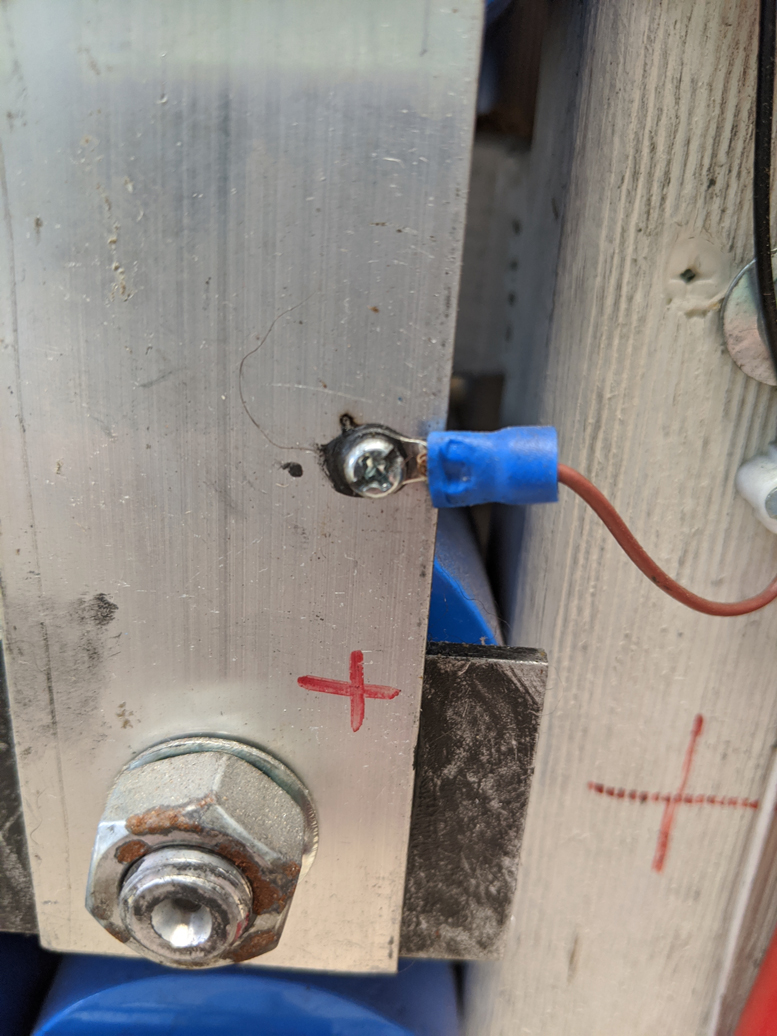
Connection point on bus-bars for both Active Balancer and BMS. Note the rust condition of these FAKE 66160 cells purchased on AliExpress by seller Shenzhen Foxell Technologies Co., Ltd
Let’s have take a closer look at the main advantages of LTO technology:
1. Extremely Long Lifetime
As discussed above, the advanced nanotechnology consisting of lithium-titanate nanocrystals and their increased surface area are especially designed to enhance the lifetime of these batteries.
With an over 30 times larger surface area, this technology is able to recharge substantially faster than its more traditional alternative, the Li-Ion battery.
The cycle count of a Lithium Titanate battery is 20,000 in comparison of only 2000 in a regular lithium battery, marking a revolutionary approach to energy storage.
LTO cycle life at high rate charge and discharge
For the consumer, this means that less electricity and power is needed in order to sustain the battery power. These batteries can be safely charged between six and ten minutes in contrast to the 8 hours required for other rechargeable batteries.
On top of that, the recharge efficiency exceeds an entire 98%, a record-breaking advancement in the field of renewable energy. Furthermore, the charging cycles are much shorter in comparison with other energy sources.
2. Rapid Battery Charging and Discharging
Lithium Titanate Oxide (lithium titanium oxide) batteries (LTO) are advanced modified lithium-ion battery that employs nano-technology in the form of lithium titanate nanocrystals instead of normal carbon material on its surface.
The advantage of technical principle is that the anode has a surface area of about 100 square meters per gram of material – which certainly stands out as a lot more when compared with the 3 square meters per gram for normal carbon material.
LTO cell regular discharge rates
This allows the electrons to enter and exit the anode faster, thus making it possible to charge and discharge the battery very rapidly. We see charge times in minutes instead of hours. This also allows for multiple full or part cycling per day.
3. Enhanced Safety
In addition to the enhanced efficiency and energy-conserving qualities of Lithium Titanate Oxide (lithium titanium oxide) batteries, this technology is known for its high level of safety when used in comparison to alternative options.
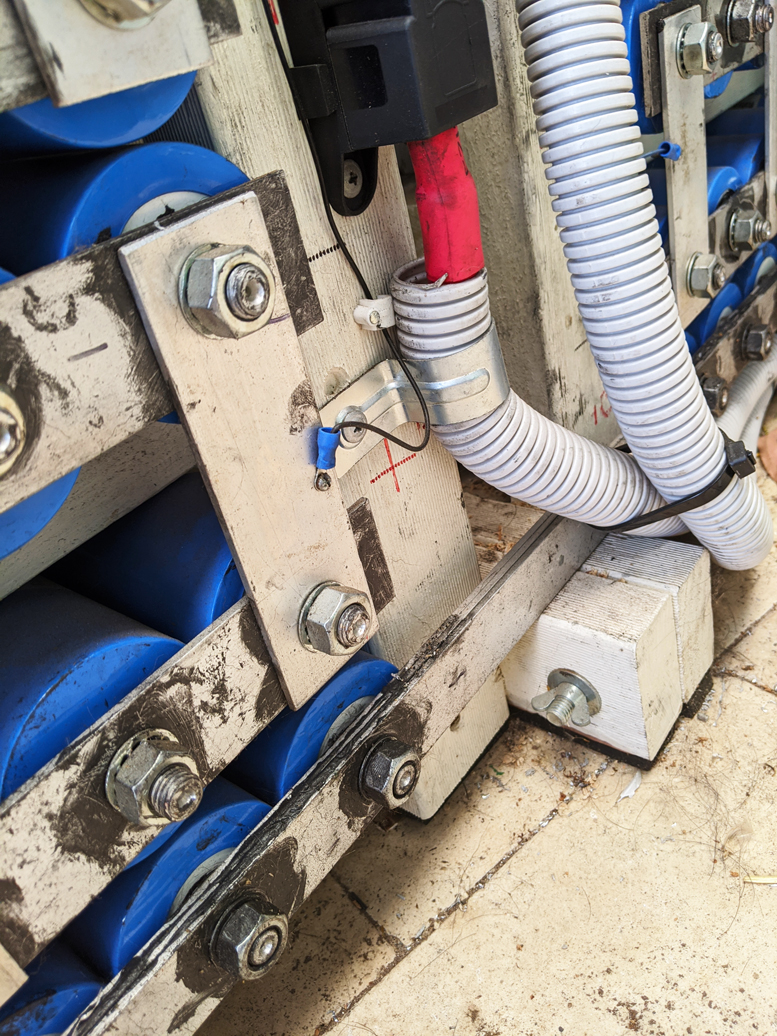
Lower bus-bar connecting the two banks together. Cross bus-bar is multiple strips of aluminum flat bar.
Due to the lower operating voltage of this technology, there are significant safety advantages for the consumer and the environment. As Lithium Titanate batteries are entirely free of carbon, they avoid thermal runaway or overheating which is a main cause of fires in traditional energy storage systems.
LTO cells are resistant to mechanical abuse
66160 Lithium titanate cells have a long history in busses through-out China accumulating many thousands of work and recharge cycle hours with unrivaled safety
Without the risk of fires or explosions, Lithium Titanate technology allows for safe, user-friendly and low-risk energy storage in any application.
4. Low-Temperature Performance
Another advantage of using Lithium Titanate batteries is that due to the nanotechnology employed, these batteries have a much better low-temperature performance in comparison to other battery technologies.
Due to these low-temperature discharge characteristics, it is able to obtain up to 80% of its full capacity at a mere -30°C.
LTO cells support low temperature discharge
This is of particular benefit to those companies employing Lithium Titanate technologies at lower temperatures or in regions with cold winters.
Example of a LTO cells for high current applications
5. Integration with Energy Storage
Last but most certainly not least, Lithium Titanate Oxide (lithium titanium oxide) is bridging the gap between battery energy storage and the grid power. Large scale lithium ion has lead the way proving it’s viability – now we can move forward with other technologies.
With an increasing importance of renewable energy options, the possibilities of Lithium Titanate Oxide (lithium titanium oxide) batteries allow for a synergy between solar and wind power, battery storage and the grid.
Lithium titanate or LTO technology IS NOT optimal for things such as vehicles as they have a low energy density per cell meaning large numbers are needed to achieve results similar to Lithium Ion or even Lithium Phosphate cells.
Energy storage based on Lithium titanate has the potential to contribute greatly to power system stabilization, with vast potential in creating a renewable energy source that is more sustainable than any other previous alternatives.
Energy storage application using the Lithium titanate oxide (LTO) cells
The future of sustainable and renewable energy sources depends on technologies like the Lithium Titanate battery that through long lifetime and high efficiency, enhanced safety, low-temperature performance capability, and vast potential of integration with wind power are opening up a world of opportunities with particular focus on vehicles and mobile energy usage.
What I Am Impartial About With Lithium Titanate Batteries
-
They have a low power density
-
The usable amount of power leans more towards Lead Acid as opposed to Lithium Ion
-
They are generally more expensive to buy (initially)
-
There are not a lot of accessories available for this type of chemistry battery
-
Single cell charge/testing devices are extremely rare!
-
Traditional Daly – type BMS are fairly ineffective UNLESS your system STARTS in NEAR-PERFECT balance. They offer very little in bringing batteries back into balance and tend to be more a low value protection device (in larger systems – not so much in E-Bike situations).
What I Don’t Like About Lithium Titanate Batteries
-
My experience with LTO pouch cells has not been great. They are not very forgiving with being out of balance – particularly in the over-charge situation where they tend to blow up like a balloon!
-
There is little in the way of LTO single cell charges or analyzers available on the market.
-
The range of cells is quite low when compared to LiFepO4 and Lithium Ion cells.
-
The battery storage industry has really let itself down by not monopolizing on the positive aspects of safety and environmental like the HUGE LIFESPAN they have.
More information: Swelling LTO pouch cells – https://www.nature.com/articles/srep00913
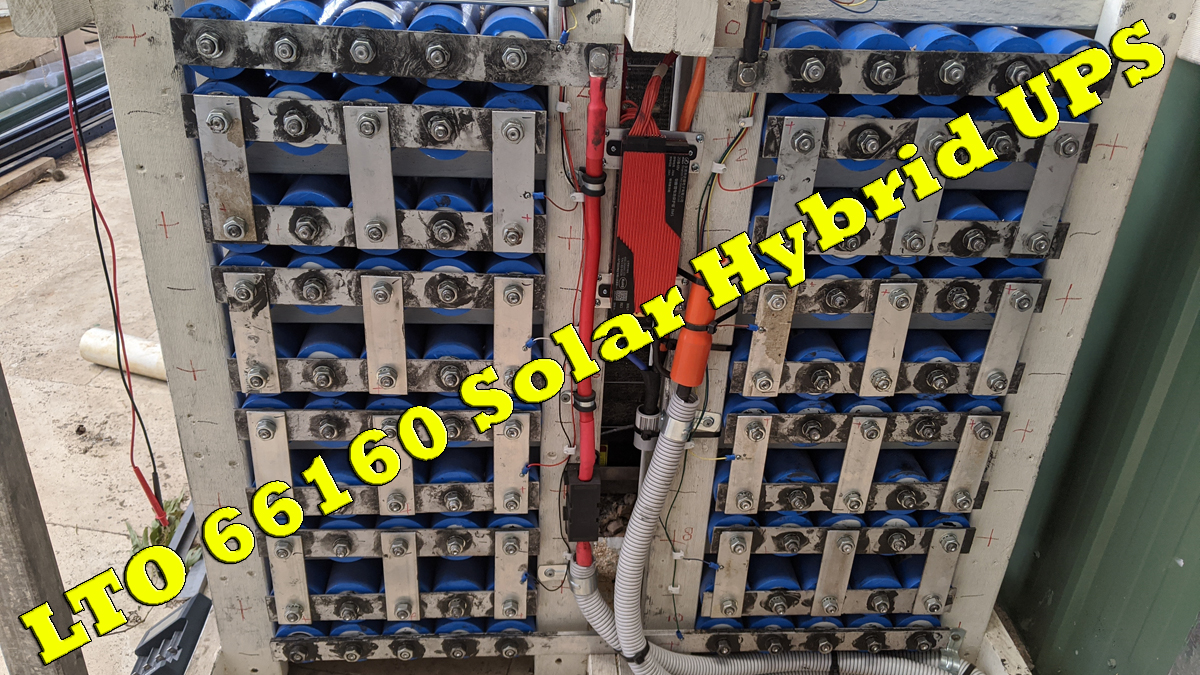


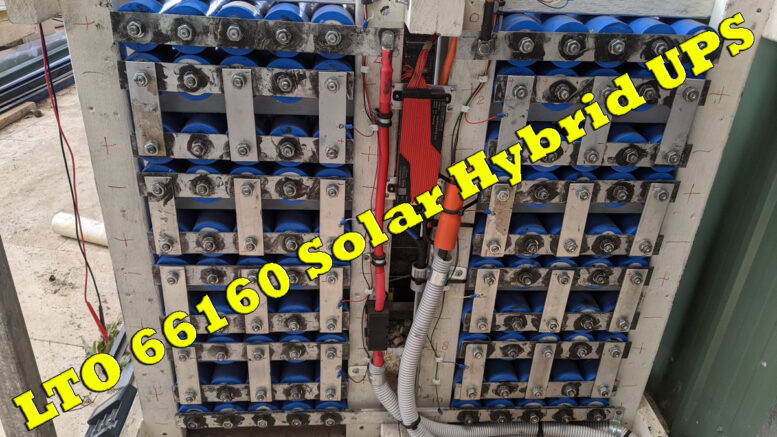
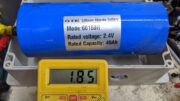
Hi,
I am looking to invest in an off grid system next spring (UK ) I have funds available to get a 20kw bank of LTO cells – I am trying to get all my ducks in a row before spending the money and have been trying to get reliable advice from someone with actual experience with this battery chemistry like your self.
I live on the isle of skye in Scotland – plenty of wind – lots of light in the summer – 6hrs of light this time of year.
I plan to use water as the dump load and intend to use the pv and wind turbine to heat 500litres up to a set temperature and once reached use electric storage heaters to take any further power not being used in the battery bank.
My daily power usage should be around 9kw maximum.
My question is – what size battery bank would I need to meet all my needs for say 48 hrs with no sun and no wind (highly unlikely).
I have 5kw of PV already and want 4 kw of wind turbines (2 x 2kw) I have plenty of space for battery storage and for PV panels .
I have a budget of £20k maximum.
I am grid connected and have diesel generators available.
Elisabeth
Hi Elisabeth, well, that’s a long list of what ifs!…. Firstly, the LTO chemistry will last you a lifetime plus some. It is also safe and forgiving – in saying that, you should keep your discharge requirements to 80% of the total battery capacity. This will keep those batteries happy for many years to come. If you have a 20kw battery, your total usable (not including other minor losses) is 16kwh. You need to calculate consumption in total kwh for your heating elements and appliances and put that up against your battery. Eg, I require 3000w of usage every hour for 48hrs = 3000×48 – now that’s quite a lot, 144kwh. But during the day/windy times – you are directly feeding your needs from solar and wind. I’d suggest using high capacity charge controllers to store lots of energy quick, as the batteries can handle this and wind can be random. I think you should look around some more, there are great instructionals on YouTube and many webites with the calculations you will require.
Kind regards, Adam
Hi Adam,
Just stumbled across your youtube channel. Just wondered if you had any updates on the LTO’s you were setting up. Thanks.
Hi James, I did end up making another battery wall and in time, will add a story about it. It uses LTO cells and 10kwh capacity which translates to about 6kw usable in it’s set-up due to the Growatt SP 2000 having pre-programmed voltage parameters. I do not update this blog often, but will be adding to it in the future.